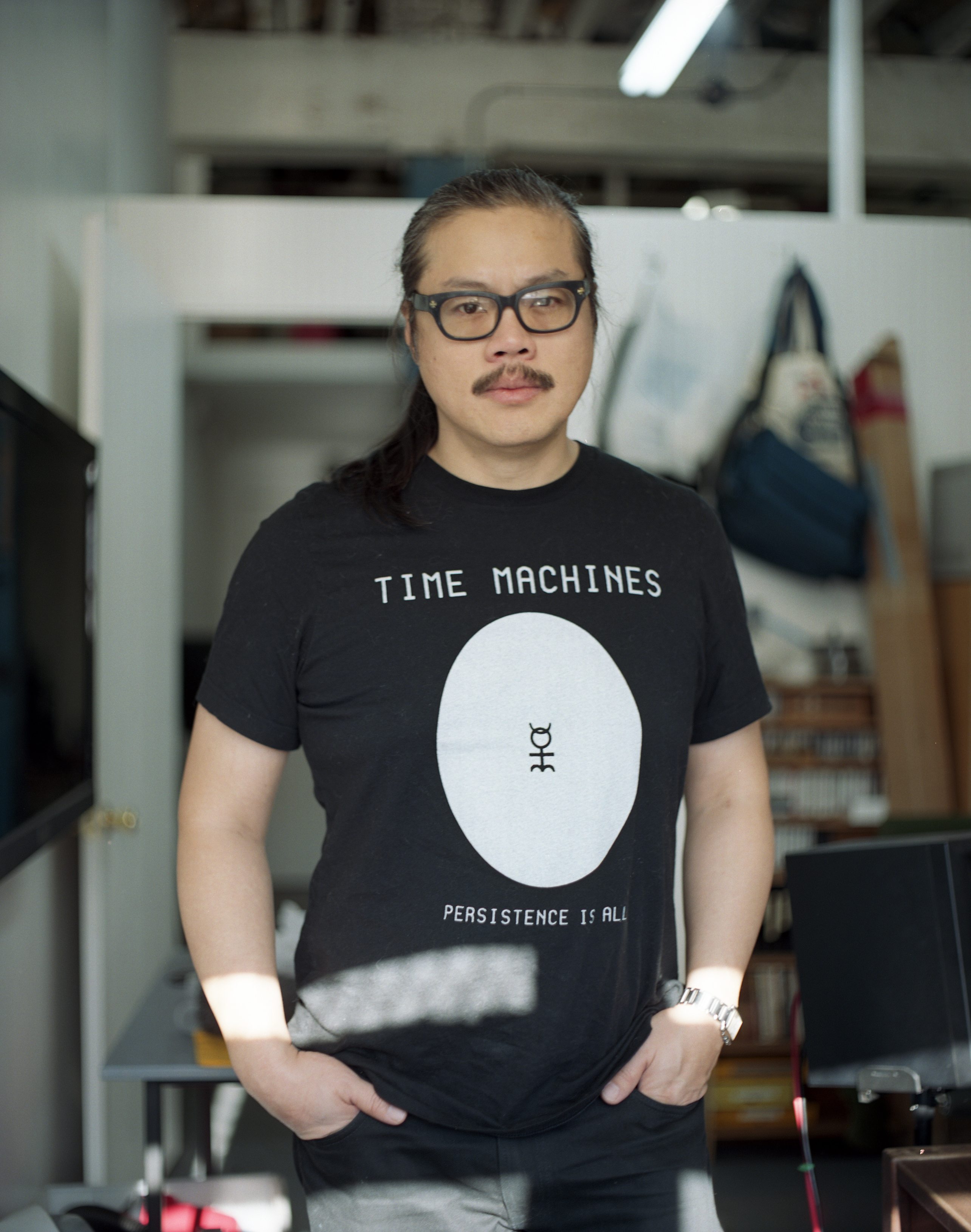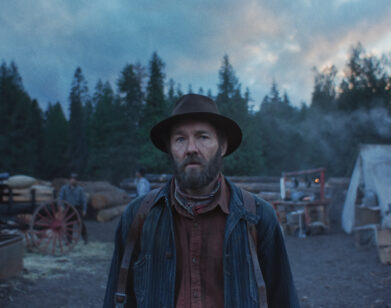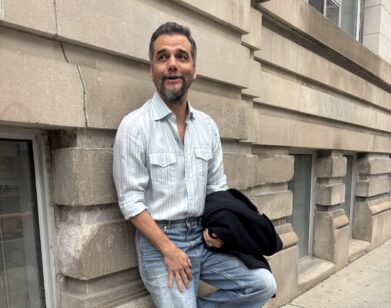C. Spencer Yeh’s long, strange trip
There is a tradition—especially among Americans—of traveling to far flung places with the hope of “finding” oneself, as if the strangeness of being in a foreign country can unlock some hidden part of our psyche, and reveal a new person. Traveling abroad to find something that’s been within us all along…it sounds like a ludicrous notion, but it’s nonetheless a powerful one, and it has propelled people across the world for generations. The problem, though, is that tourists are primarily concerned with their experience of a place—not the place itself. And the myriad art that comes out of travel is usually inward gazing, not outward.
In his nearly 8-hour-long film Shocking Asia, Brooklyn-based artist and musician C. Spencer Yeh attempts to make his presence disappear into the strangeness of his surroundings. While traveling around Southeast Asia, he began collecting footage on his iPhone, unsure of how it would all come together. He began thinking about mondo films, which had their heyday in the ‘60s and ‘70s—pseudo-documentaries that attempted to shock viewers with graphic and grotesque depictions of taboo subjects, such as death. One of the more famous mondo films is Shocking Asia (1974), a so-called expose on secret and perverse facets of Asian culture. (In reality, many scenes were staged for dramatic effect.) Yeh realized, as he collected footage of places like Myanmar’s otherworldly Drug Elimination Museum, he was making something of a 21st century Shocking Asia: one that not only captures the surreality of a place, but also the ordinary numbness of being a foreigner abroad. While he does document some “shocking” things—including a “hell park” filled with sculptures of demons in Thailand—the film is mostly hypnotic, cinéma vérité shots of car rides through cities, parks, public squares, and temples.
This Saturday, Yeh’s Shocking Asia will open with an exhibition at Empty Gallery in Hong Kong. Last month, we met in his Greenpoint studio to discuss making what is likely the first mondo film to ever be called “Chantal Akerman-esque.”
MATT MULLEN: What brought you to Asia?
C. SPENCER YEH: For this trip in particular, it was my honeymoon, my spouse and I’s. I had not spent a lot of time in Southeast Asia, though I was born in Taipei.
MULLEN: What was your childhood like?
YEH: In Taipei, I only remember bits and pieces. We came to the U.S. when I was five and on the way we were in Montreal for a year or two. It’s really weird because a lot of my childhood memories are of having to fend for ourselves, in a way. When growing up, it’s weird to have what would normally be considered your guides—your parents or maybe an older sibling—to have them be lost and trying to figure things out as well. It sometimes feels like you get trapped between these two worlds. It also leads to an interesting inner life, at least for myself.
MULLEN: Do you remember the first time you encountered a mondo film?
YEH: On family trips, when we would go on a road trip, we would stop at big Asian markets oftentimes outside of major cities, like Chicago or something. And in those shopping centers there would usually be a store that rented videotapes, and that’s where I first encountered mondo. I remember the promise of those strange VHS covers and what that meant, and being obsessed with that. It’s like when you look at the cover of cassettes … My favorite example is Pink Floyd’s The Wall—the cover is just a drawing on the wall and you look at it and you’re like “What could this possibly sound like?” So that feeling of not actually seeing what it is but having this promise of what it could be, the thrill of that.
MULLEN: So you were traveling around Asia on your honeymoon. How did this project come about?
YEH: Where to begin. I mean, originally this trip was going to be no working. But pretty soon it became clear that something had to happen. You’re snapping photos and you finally get to a place where you’re like “What the fuck is going on?” The place that really kicked things off was the Drug Elimination Museum in Yangon, Myanmar. It’s fucking crazy! I thought it would be a super small place, but it’s a multi-floor, it’s a huge building. The entire campus is devoted to this museum, and it’s basically this one big piece of propaganda preaching the dangers of drugs and also propping up Myanmar and particularly the military regime as instrumental in keeping drugs out of the country. It’s all these life size dioramas of people partying, doing drugs, feeling sick, and then eventually ending up in the gutter. Or literally in another world, because they have a transparent floor, with shit underneath it. Then there’s this animatronic hand that is literally dragging you into hell. So this is what’s going to get you if you do drugs.
MULLEN: Wait, and is this also about the history of Myanmar?
YEH: The history of Myanmar as it relates to fighting drugs. Walking in I was like, “Oh my god, I need to start documenting this place,” and then at that point I had started thinking about what eventually would become this project. On this trip, the entire time even beforehand, Meg and I would discuss being a tourist, what that’s all about, how much we were just going to accept that we were tourists and how maybe that actually helps being a bit more respectful and ethical.
MULLEN: I noticed in the excerpt I watched there seemed to be a few moments where the camera lingers on tourists. Did you see yourself as one of them?
YEH: It’s hard for me not to photograph tourists, and also think of myself as a tourist. But at one point I was reading this piece of writing that introduced me to the idea that there are tourists and there are also people making pilgrimages, and how is that different? Is it considered an elevated form of tourism? So I was thinking a lot about that. I’m already implicated and this work already exists and I just have to figure out what I can do with it to at least attempt to a bit reasonable. I don’t want it to be, like, poverty porn or whatever. There was some stuff that I shot which I would discuss with Meg if I should I use or not, and she was like “No, do not use that, that’s weird.” You just have to go by feel and by conscience. In the office of the museum, there was someone straight up asleep with their head on the desk and I took a photo of that. Or the sculpture park in Singapore, they were renovating the park, and there was someone just asleep in a bulldozer, so I photographed them. I felt like that was okay.
MULLEN: You’re showing this work in Asia. Let’s talk about that. Would you show this work in New York? How do you think the reactions would be different?
YEH: Well, for one thing, it’s been a little spoiling working with Empty Gallery, because we’ve been able to explore ways of presenting this work that maybe a more commercial gallery here wouldn’t be able to. Hong Kong sits in this weird place. It’s quite Western. I’ve been going back and forth on how much to erase of the presence of Meg and myself, because one thing I definitely didn’t want was to make it feel like you’re watching someone make their way through a backpacking trip. I mean we know that there is a gaze, someone’s got to be there. So it comes down to presentation in many ways.
MULLEN: How will the work be shown in the gallery?
YEH: We went through a number of ideas of how to divide it up and present it. Because there’s just so much of it. [laughs] We figured out this series of chambers and in each one, there will be certain sections of the film playing—generally in order although we mess with it a little bit. I’m going to be putting titles in, things like that, so that for someone who’s paying attention, there’s a sense of all these different parts fitting together. We’re also going to have beanbags for people to sit in.
MULLEN: What would a film like this about America look like? The Myanmar Drug Elimination museum and how crazy weird it is, for example; is there an American equivalent?
YEH: I mean, that museum is unique because it’s just fucking weird—even for people from Myanmar. I met this one dude Ted, he’s a young noise musician from Yangon, and I mentioned that museum and he was like “Oh yeah, that place.” I had a friend in Singapore who actually was the one who took me to the hell park and he told me when he was a kid, parents would bring kids to the hell park in an attempt to scare them straight. In America we have Christian haunted houses, where they have a woman with a bloody crotch screaming “Aaaaah!”
MULLEN: Do you agree there is a tendency among Americans to think, “We’re normal, everyone else is crazy”?
YEH: Completely. That’s why I’m so interested to see the public’s reaction. If I’m going to make something and put it out there, I deserve any kind of response back. Whatever that may be. I’ve realized the eight-hour-long run time—for people who want some consumable look at how fucked up things are—would that help dissipate that energy? And, like, after a while of watching these long Chantal Akerman-esque shots, I wonder if Meg and I’s presences start to just disappear.
C. SPENCER YEH’S “SHOCKING ASIA” OPENS DECEMBER 9 AT EMPTY GALLERY, HONG KONG, AND RUNS UNTIL FEBRUARY 10, 2018.







